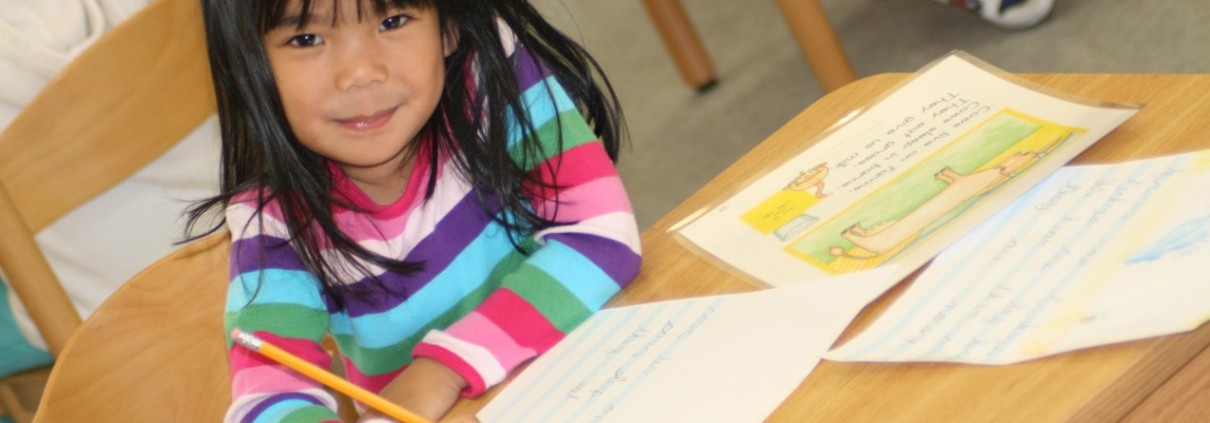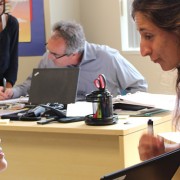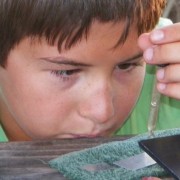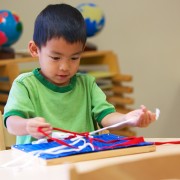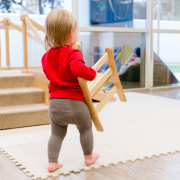Don’t Redshirt for Kindergarten–Eliminate Fixed Timeline
Over the past year, much has been said about the right time to start students in Kindergarten. Starting in fall 2012, California will move up the age cut-off, so only students who turn 5 before September 1st can enter Kindergarten. (Previously, the cut-off date was December 2nd.) Researchers have reported on a growing trend that parents are holding back children who would otherwise be eligible for Kindergarten, so as to give them an extra year of maturity. Much of this concern is due to the “increasingly academic nature” of Kindergarten, and worries that students may not yet be ready, at age 5, to sit still and pay attention in class.
These concerns are understandable and valid in the traditional public school model, and many parents rightly agonize over the decision of when to start their children in Kindergarten.
Fundamentally, though, the issue is not when children should start Kindergarten, but whether the transition into Kindergarten needs to be as difficult and consequential as it is in the public school system (and many private schools). What is it about Kindergarten that makes it such a negative experience for so many children?

More than anything, it is the artificial and unnecessary change in behavioral expectations and academic methodology. At age 5, public school children are suddenly expected to shift from a preschool’s free-play environment to the rigorous, group-based structure of a traditional classroom. They are required to sit still, to be quiet and listen, and to follow a tightly-scheduled plan of 30 minutes of this subject, then 30 minutes of that. They are expected to transition from playing with Legos or trains or doll houses, to completing monotonous worksheets. They are, on a dime, required to stop following their own interests and impulses, and to adhere instead to adult-set, adult-led procedures and goals. Without preparation or training, children are expected to transform their entire approach to school. No wonder parents are concerned about when and whether their children will succeed at making this transition!
This is all very unfortunate, because there is such a beautiful alternative to this whole manufactured struggle: Montessori education. Montessori schools do not require such a black and white decision about when to start Kindergarten. They do not subject a child entering her Kindergarten year to abrupt, radical changes that are inconsistent with their actual needs. Nor do they leave a preschooler unprepared for the actual, gradual changes that are forthcoming.
In a well-run Montessori school, students aged 3-6 are grouped together in one classroom, called the Primary classroom. The classroom is equipped with a wide range of educational materials. It offers simple “practical life” exercises, such as pouring or sorting, for the youngest children, as well as very advanced academic materials, which can take some 6-year-olds all the way through reading chapter books, studying introductory grammar, and doing arithmetic into the thousands (skills typically not taught until 1st grade or later in most other schools.)

In a Montessori program, each child progresses through the sequence of materials at her own pace, under the guidance of a trained, observant teacher. Because all of the work is individual, because children practice as long as they need to achieve mastery, because children move ahead only if and when they are ready, there is no need to make each child transition into “academic Kindergarten.” Academic challenges get tackled naturally, as the child is academically ready—not when it suits a school system’s artificial schedule. [Many Montessori schools also move children up to 1st grade when they are developmentally ready, not on a fixed September timeline.]
In fact, Montessori students are never forced to make the radical shift in behavior that public schools demand. Not in their Kindergarten year, and not in the higher grades. Instead, they gradually grow over time into more scheduled routines and abstract content (including class lectures and group lessons as it becomes age-appropriate). Using the Montessori materials, they steadily build their attention spans, learn to pace and plan their own work, and progress from concrete to abstract. For example, they first learn to solve multiplication problems with the Golden Bead materials, then, as they solidify the principles involved and become able to hold them more abstractly in their minds, they move to solving them with just pencil and paper.
By the time they graduate from the “lower elementary classroom” (ages 6-9), students are ready for the more conceptual, abstract studies of upper elementary, as well as for the more structured schedule, and are eager to discover the exciting insights that come next.
Fundamentally, the question is not when children should start Kindergarten, but why a system that so clearly violates children’s most fundamental developmental needs continues to be accepted as the norm for schooling in this country.
Heike Larson

